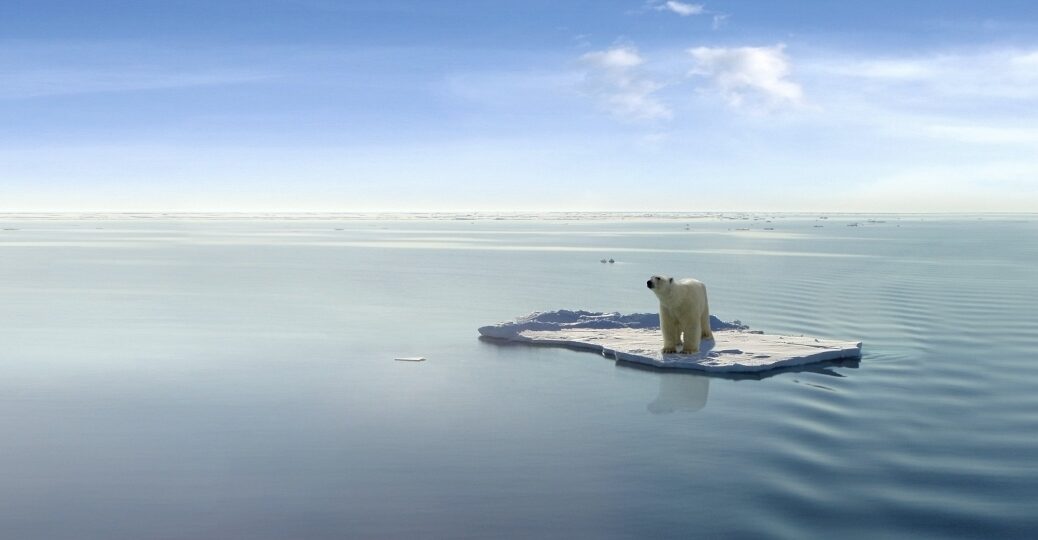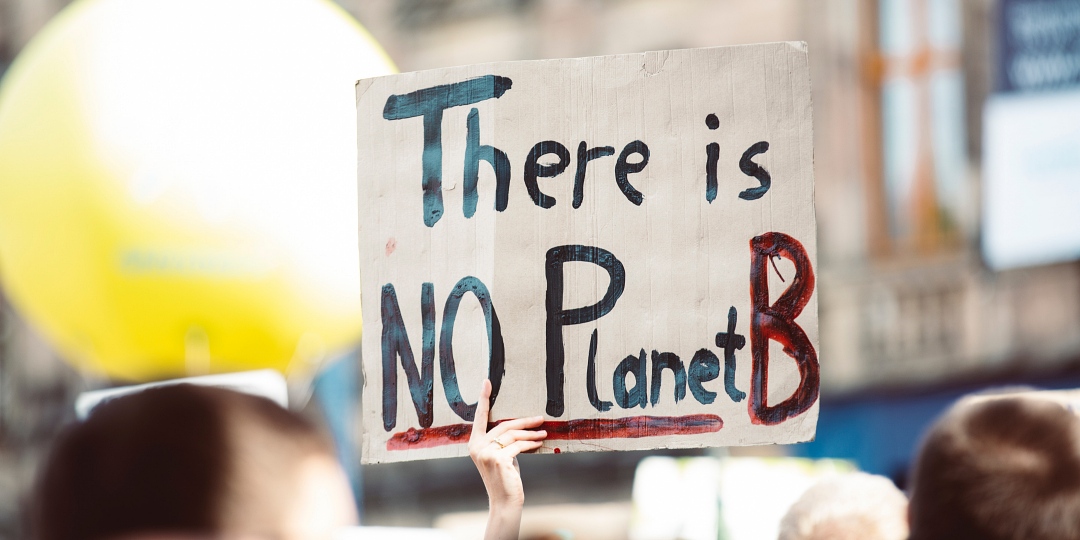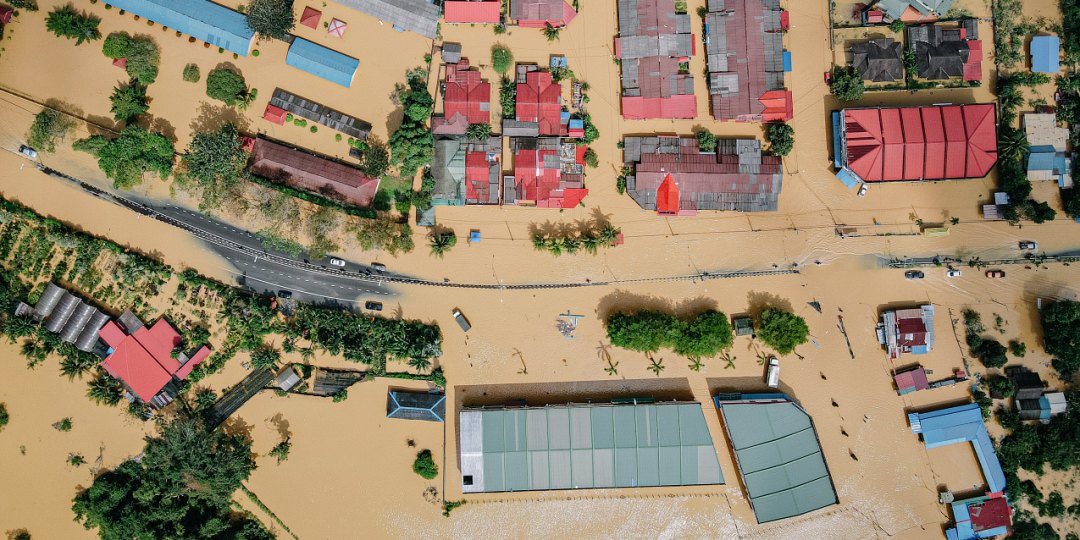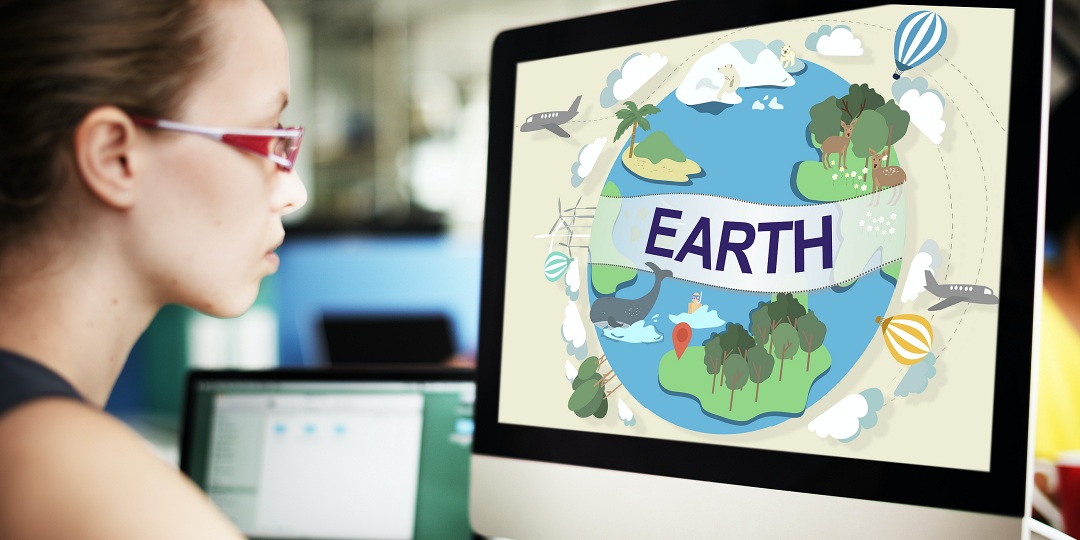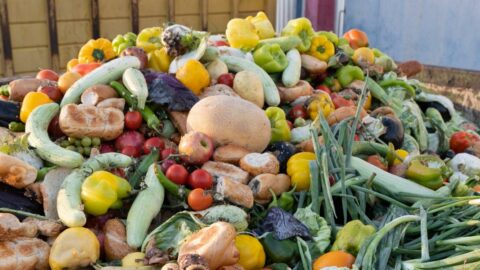Climate change is the defining issue of our time and we are at a critical moment. From shifting weather patterns that threaten food production to rising sea levels that increase the risk of catastrophic flooding, the impacts of climate change are global in scope and unprecedented in scale. To ignore this pressing issue is to disregard the lives of future generations and the health of our planet.
What is Climate Change?
Definition of Climate Change
Climate change refers to a broad range of changes that are happening to our planet. These changes include everything from rising average temperatures (global warming), to changes in precipitation patterns, more frequent and severe extreme weather events, rising sea levels, and more. These changes are largely driven by human activities, especially the burning of fossil fuels like coal, oil, and gas, and deforestation.
Natural phenomena such as volcanic eruptions and variations in solar radiation can influence climate, but scientific evidence indicates that human activities are primarily responsible for the rapid climate change observed in recent history. The release of greenhouse gases into the atmosphere by human activities like burning fossil fuels, deforestation, and industrial processes is causing our planet to warm at an alarming rate.
Impact of Climate Change
The impacts of climate change are vast, affecting both natural ecosystems and human societies in profound ways. Its influence is felt from the icy expanses of the polar regions to the warm, vibrant tropics, and from lofty mountain peaks to the depths of our oceans. This diversity of impacts reflects the omnipresence of our climate system, and the fact that changes to this system can reverberate across all aspects of life on Earth.
Firstly, climate change disrupts ecosystems and biodiversity, fundamentally altering the natural world. Changes in temperature and precipitation patterns can push plant and animal species out of their comfort zones, often resulting in shifts in species distribution, changes in timing of biological events (phenology), and even species extinctions. For instance, warmer springs can cause trees to leaf out earlier, which can disrupt the timing of food availability for migrating birds. More extreme weather events, such as wildfires and hurricanes, are also becoming more frequent and intense due to climate change. These events can devastate ecosystems, wiping out entire communities of species and reshaping landscapes. Climate change can also have impacts on the ocean, causing sea levels to rise and the water to become warmer and more acidic. This has led to widespread coral reef die-offs and significant shifts in fish populations, which in turn impact the people and wildlife that rely on these ecosystems.
Additionally, climate change has significant consequences for human societies. Rising sea levels, driven by melting ice caps and thermal expansion of seawater, pose a major threat to coastal communities and cities, potentially causing displacement of people and loss of land. Altered weather patterns can lead to more severe droughts and floods, impacting agriculture and water supplies, and thus affecting food security and access to clean water. Human health is also at risk, with increased potential for heatwaves causing heat stress and related health issues, as well as changing distribution patterns of disease vectors like mosquitoes. Furthermore, climate change can exacerbate social and economic inequalities, as those with fewer resources are often hit the hardest by climate impacts and have the least capacity to adapt.
In sum, the impacts of climate change are far-reaching, affecting every corner of our planet and many aspects of life. It disrupts ecosystems, diminishes biodiversity, and places human societies under significant stress. The urgent need to understand and act upon this global issue has never been more evident.
Evidence of Climate Change
The evidence of climate change is abundant and compelling, drawn from a diverse array of sources that include historical climate data, direct observations, and scientific analysis. For instance, climate records extending back to the industrial revolution in the mid-19th century show a clear and marked increase in global temperatures. This increase in temperature, often referred to as global warming, is predominantly due to human activities such as the burning of fossil fuels and deforestation, which increase the concentration of greenhouse gases in the atmosphere.
In addition to historical data, we are witnessing evidence of climate change in our day-to-day experiences. We are living in a world that is increasingly characterised by more frequent and severe heatwaves, storms, and other extreme weather events. The increase in the frequency and intensity of these events can be tied directly to the rise in global temperatures. In fact, the 20 warmest years on record have occurred since 1991, and all except one of these were in the 21st century. This trend is consistent with predictions made by climate scientists and provides clear evidence that our climate is changing at an unprecedented rate.
Moreover, the physical landscape of our planet also bears the marks of climate change. Ice sheets in Greenland and Antarctica, important indicators of global climate health, are melting at an accelerated pace. As the ice melts, it contributes to a rise in sea level, posing a potential threat to coastal communities worldwide. Similarly, glaciers around the world, from the Himalayas to the Alps, are in retreat. Glaciers are critical freshwater resources for many communities, and their loss can lead to water shortages. In many places, the annual meltwater from glaciers also plays a critical role in generating hydroelectric power and irrigating crops.
Taken together, these different strands of evidence paint a picture of a planet undergoing rapid and profound changes. The warming of our world, the increase in extreme weather events, the melting of ice sheets and glaciers – these are all indicators of a changing climate. Understanding and responding to these changes is one of the greatest challenges facing humanity today.
Why We Should Care About Climate Change
The Urgency of the Situation
Climate change is not a distant, abstract threat; it is an immediate and pressing reality. We are not talking about scenarios that are hundreds or thousands of years in the future – the effects of global warming are evident here and now. According to a report by the Intergovernmental Panel on Climate Change (IPCC), human activities have already caused approximately 1.0°C of global warming above pre-industrial levels. This warming is causing more extreme weather, rising sea levels, and diminishing Arctic sea ice, among other changes to the environment.
Scientists stress the critical importance of understanding the immediacy of this crisis. They warn that if greenhouse gas emissions continue to rise at the current rate, we will likely reach 1.5°C of global warming between 2030 and 2052. This is a threshold that scientists believe could trigger some of the most catastrophic impacts of climate change, such as mass coral bleaching, significant loss of Arctic ice during summers, and a sharp increase in heatwaves, extreme storms, and droughts.
Perhaps most significantly, scientists emphasize the urgency to act swiftly to prevent these scenarios. According to the IPCC’s report, limiting global warming to 1.5°C would require rapid, far-reaching, and unprecedented changes in all aspects of society. It would necessitate deep reductions in greenhouse gas emissions by 2030 and reaching net-zero emissions by 2050.
These timelines underscore the urgency of the situation. We no longer have the luxury of debating or denying the reality of climate change. The time for action is now. Every moment we delay increases the difficulty of mitigating the impacts of climate change and reduces the feasibility of limiting global warming to manageable levels. We have a narrow window of opportunity to act, and we must seize it before it is too late. This is not merely a question of environmental stewardship; it is a matter of survival for many species on this planet, including our own.
The Irreversible Impact of Climate Change
The impacts of climate change, once set in motion, are not only extensive and devastating but, in many cases, they are also irreversible on human timescales. One of the most alarming aspects of climate change is the degree of permanence associated with some of its impacts. A striking example of this irreversible impact is the continued rise in sea levels. Sea-level rise is a result of two primary factors: the expansion of sea water as it warms, and the melting of land-based ice, such as glaciers and ice sheets. Once these processes are set in motion, they continue for hundreds to thousands of years, regardless of reductions in greenhouse gas emissions.
This irreversible aspect is due to the vast inertia in some of the systems involved. For instance, consider the large ice sheets in Greenland and Antarctica. These enormous bodies of ice took tens of thousands of years to form in conditions cooler than those we experience today. Once they begin to melt due to our warming climate, it’s impossible to reform them within human timescales, even if we could return the atmospheric temperature and greenhouse gas concentrations to pre-industrial levels.
This doesn’t just apply to the physical processes in the climate system. Many biological systems, such as coral reefs and rainforests, may also experience irreversible changes. Once a coral reef is bleached or a rainforest is deforested, it can take centuries for these ecosystems to recover, if they can recover at all. Moreover, the loss of species due to changing climate conditions is a change we can’t reverse.
However, despite these sobering realities, there is still cause for cautious optimism. While we cannot completely halt the changes that have already been set in motion, we can prevent further damage. Timely, ambitious, and coordinated action can significantly limit the extent of climate change and its effects on our planet. By rapidly reducing our greenhouse gas emissions, investing in renewable energy, and implementing sustainable practices, we can slow the rate of warming and give ecosystems a fighting chance to adapt.
Not only can such actions help us mitigate the most catastrophic potential impacts of climate change, they can also bring about numerous societal benefits. Transitioning to a greener economy can spur technological innovation, create new jobs, and lead to cleaner air and water. Adapting to climate change can make our societies more resilient to future environmental changes and can help protect the most vulnerable among us.
While the irreversible impacts of climate change may be daunting, they should not paralyze us into inaction. Instead, they should serve as a potent reminder of the urgency of our situation and the need for concerted action now more than ever.
Potential Consequences If We Do Not Act Now
The potential consequences of inaction in the face of climate change are dire, spanning the environmental, economic, and social spheres. If we fail to curtail our greenhouse gas emissions, we face a future marked by increasingly severe and frequent climate impacts. This isn’t a distant, abstract possibility; it’s the clear trajectory indicated by current climate models and scientific understanding.
Environmentally, the effects would be devastating. Heatwaves, already more frequent and intense due to current levels of warming, would become an even more common occurrence. Such heatwaves can trigger widespread wildfires, such as those seen in recent years in Australia, the Amazon, and the western United States. These fires not only destroy homes and human lives but also devastate wildlife and release more carbon into the atmosphere, further fueling climate change. Rising sea levels would accelerate, threatening low-lying island nations and coastal cities. The intensification of storms, hurricanes, and cyclones, fueled by warmer oceans, could lead to greater property damage, loss of life, and social disruption.
Economic consequences could also be severe. Agriculture, a cornerstone of many economies, would face significant challenges due to changing weather patterns, increased drought, and the spread of pests and diseases, leading to decreased food production. Water scarcity could become an even more pressing issue, impacting everything from human consumption and sanitation to industry and energy production. As these impacts hit home, we could see large numbers of climate refugees, people forced to flee their homes and communities due to environmental changes, leading to global political and social instability.
The potential public health consequences are equally troubling. Warmer temperatures and changing precipitation patterns could allow vector-borne diseases like malaria and dengue fever to spread to new regions. Heatwaves can cause heat stroke and other health problems, particularly for vulnerable populations such as the elderly, children, and those with pre-existing health conditions.
Wildlife stands to lose enormously, as their habitats undergo rapid changes. Coral reefs, crucial biodiversity hotspots and the nurseries of our oceans, face existential threats from ocean acidification and warming waters. The Arctic tundra, home to species like polar bears and seals, is disappearing as temperatures rise. Tropical regions, already suffering from deforestation, could face further habitat losses due to changing climate conditions.
In short, the potential consequences of failing to address climate change are enormous and touch every facet of life on Earth. The changes we’re seeing now are just the beginning, and they will likely accelerate if we continue on our current path. However, this grim future is not yet written in stone. We still have a window of opportunity to take meaningful action against climate change, but it requires immediate, decisive, and sustained effort from all sectors of society.
Moving Toward a More Sustainable Lifestyle
Definition of a Sustainable Lifestyle
A sustainable lifestyle can be thought of as a way of life that seeks to minimize one’s environmental impact by making conscious decisions in every aspect of life—from the food we eat to the clothes we wear and the transportation we use. It’s a holistic approach, aiming to create a balance between our needs and desires and the health and preservation of the natural world.
“Sustainable,” in its broadest sense, refers to practices that can be maintained or continued over the long-term without depleting resources or causing harm to the environment. It involves three key elements, often referred to as the three pillars of sustainability: economic, social, and environmental. Economic sustainability involves managing resources in a way that is efficient and beneficial to both current and future generations. Social sustainability focuses on promoting fairness, equality, and healthy communities. Environmental sustainability is about protecting and preserving the natural environment and its ecosystems.
“Lifestyle,” meanwhile, encompasses the everyday habits, behaviors, and choices that an individual makes. It includes what we consume, how we travel, what we buy, how we dispose of waste, and many other aspects of daily life.
A sustainable lifestyle, then, is a way of living that minimally impacts the environment, promotes social justice, and is economically feasible. It involves being aware of our consumption patterns and making conscious decisions to reduce waste, limit resource use, and minimize greenhouse gas emissions.
For example, a sustainable lifestyle might include eating a plant-based diet or reducing meat consumption, as the meat industry is a significant contributor to greenhouse gas emissions. It might involve choosing to walk, bike, or use public transportation instead of driving a personal car to reduce carbon emissions. It could also mean buying second-hand or choosing products made from recycled materials to reduce waste and demand for new goods.
Additionally, a sustainable lifestyle isn’t just about being good for the planet; it also often aligns with actions that promote personal health and well-being. Eating fresh, local produce, getting regular exercise through active transportation, and reducing consumption can all contribute to a healthier lifestyle.
In short, a sustainable lifestyle is about living in a way that respects and protects our planet, promotes social equity, and is economically sensible, while also fostering personal health and happiness. It’s about making mindful choices in our daily lives that reflect our commitment to a sustainable future.
Benefits of a Sustainable Lifestyle
Choosing to live a more sustainable lifestyle has a myriad of benefits that extend beyond the individual to impact global environmental health. By embracing sustainability in our daily lives, we can contribute to a more sustainable world in a significant and meaningful way.
- Reducing Demand for Natural Resources: A sustainable lifestyle focuses on reducing consumption and reusing and recycling materials whenever possible. This can dramatically decrease the demand for natural resources. For example, by choosing to buy second-hand items or products made from recycled materials, we can help reduce the need for new raw materials and decrease the waste produced in manufacturing new goods. By opting for a plant-based diet or reducing meat consumption, we can decrease the demand for resources such as water and grain used in meat production, which is far higher than that used in growing vegetables and grains.
- Lowering Your Carbon Footprint: A sustainable lifestyle also aims to minimize carbon emissions. Actions like using public transportation, cycling, or walking instead of driving; conserving energy at home by switching off lights and unplugging electronics when they’re not in use; and choosing renewable energy sources can significantly reduce your personal carbon footprint.
- Making a Difference in the Fight Against Climate Change: Every sustainable choice contributes to the global fight against climate change. While individual actions may seem small in isolation, collectively they can have a powerful impact. When communities, cities, and countries adopt sustainable practices, it can lead to significant reductions in greenhouse gas emissions and create momentum for broader societal change.
- Living a Healthier Lifestyle: Sustainable living often goes hand in hand with practices that promote personal health. Eating a diet rich in fruits, vegetables, and whole grains; getting regular exercise through activities like walking or cycling; and reducing exposure to harmful chemicals in processed foods and consumer goods can all contribute to better physical health. In addition, the mindful approach inherent in sustainable living can also promote mental health by encouraging us to slow down, appreciate nature, and focus on the things that truly matter.
- Saving Money: Many sustainable habits can also lead to financial savings. Conserving energy, reducing consumption, and choosing second-hand or recycled items can all help to decrease household expenses. Moreover, sustainable choices like walking or cycling instead of driving, growing your own food, or fixing things instead of replacing them can also significantly cut costs in the long run.
In summary, a sustainable lifestyle benefits not only the environment but also our personal health, well-being, and finances. By adopting a more sustainable lifestyle, we can each make a meaningful contribution to a more sustainable world, while also enjoying a healthier, happier, and potentially more prosperous life.
Practical Steps to a Sustainable Lifestyle
Transitioning to a more sustainable lifestyle might seem daunting, but it doesn’t have to be. By making small, manageable changes in different aspects of our lives, we can collectively make a significant impact on our planet. Here are some practical steps you can take:
- Energy Efficiency and Renewable Energy: One of the simplest ways to live more sustainably is by being mindful of our energy usage. Switch to energy-efficient appliances and lightbulbs, which use less electricity to perform the same function. Unplug electronics when they’re not in use, and turn off lights when leaving a room. Consider installing a programmable thermostat to optimize your heating and cooling system, which can significantly reduce your energy consumption and lower your utility bills. In addition, consider switching to renewable energy sources. Solar or wind power, for example, can be used to generate electricity for your home. You might also consider choosing an energy provider that sources its electricity from renewable sources, if this option is available in your area.
- Sustainable Diet: What we eat has a profound impact on the environment. You can significantly reduce your environmental footprint by eating more plant-based foods, which require fewer resources to produce than meat and dairy. Buy organic produce when possible to support farming practices that are better for the environment, and consider locally-sourced produce to reduce the carbon emissions associated with transportation. Another key part of a sustainable diet is reducing food waste. Plan your meals, store food properly, and compost leftovers. Growing your own vegetables, if possible, is another fantastic way to eat sustainably. Not only will you be reducing the carbon footprint associated with transporting food, but you’ll also be getting fresh, nutritious, and delicious produce.
- Eco-friendly Transportation: Transportation is one of the largest sources of greenhouse gas emissions. Choosing more eco-friendly modes of transport can significantly reduce your carbon footprint. Whenever possible, walk or bike instead of driving. Not only is this better for the environment, but it’s also a great way to get some exercise. If walking or cycling isn’t an option, consider public transportation. Carpooling is another excellent way to reduce the number of cars on the road and the associated emissions. If you need to drive, consider a hybrid or electric vehicle. These cars produce fewer emissions and are becoming increasingly affordable and convenient as technology improves.
- Responsible Consumption and Waste Management: Our consumer choices have a significant impact on the environment. Start by buying less and choosing items with less packaging. Choose products that are durable, repairable, and recyclable, and avoid single-use items. When you do need to dispose of something, follow the principle of “reduce, reuse, recycle.” Try to find a new purpose for items before throwing them away, and recycle everything you can. Composting organic waste is another excellent way to reduce the amount of waste going to landfills and create nutrient-rich soil for your garden.
Living sustainably is not about perfection; it’s about making better choices whenever possible. Every step we take towards a more sustainable lifestyle is a step in the right direction for our planet.
How Governments, Corporations, and Institutions can Promote Sustainability
In the collective effort to combat climate change and promote sustainability, governments, corporations, and educational institutions wield significant influence. These entities can enact policies, implement sustainable practices, and shape societal attitudes towards environmental issues, often at a scale and pace that individuals alone cannot.
- Role of Governments: Governments have the power to introduce, implement, and enforce policies and regulations that promote sustainable practices. They can set and enforce standards for energy efficiency, waste management, air and water quality, and sustainable agriculture. For instance, governments can incentivize the use of renewable energy sources through subsidies, tax credits, or feed-in tariffs, which pay individuals for the renewable electricity they generate. They can also implement policies that encourage waste reduction, such as bans on single-use plastics, regulations on packaging, and recycling programs. Additionally, governments can play a significant role in land-use planning, ensuring that development is sustainable and minimizes impacts on the environment.
- Role of Corporations: Businesses and corporations also have a substantial impact on sustainability, both through their operations and their influence on consumer behavior. Companies can adopt sustainability as a core principle in their operations, making efforts to reduce emissions, conserve resources, and implement responsible sourcing and manufacturing processes. This might involve actions like adopting renewable energy sources, reducing waste, increasing energy efficiency, and sourcing materials in an ethical and environmentally-friendly manner. Further, corporations can use their marketing power to promote sustainable products and services and encourage consumers to make environmentally responsible choices.
- Role of Educational Institutions: Educational institutions, from primary schools to universities, play a pivotal role in promoting sustainability. They can foster awareness and understanding of environmental issues and sustainable practices among students, who are the future policymakers, scientists, and citizens. Schools and universities can integrate sustainability into their curriculum, teaching students about climate change, conservation, renewable energy, and other related topics. They can also support and promote research into sustainable technologies and solutions. Moreover, institutions can lead by example, implementing sustainable practices in their operations and infrastructure, such as energy-efficient buildings, waste reduction programs, and renewable energy sources.
- Role of Innovation and Technology: Technological advancement can significantly contribute to sustainability. From renewable energy technologies like solar panels and wind turbines to innovations in energy storage, electric vehicles, and carbon capture and storage, technological progress can provide practical solutions to the challenges posed by climate change. Governments and corporations can support technological innovation by funding research and development, offering incentives for the use of sustainable technologies, and facilitating the deployment of these technologies.
In addition to the direct roles these entities play, they also interact with and influence each other. For example, public pressure and activism can be crucial in pushing governments and corporations towards more sustainable practices. Environmental activists can raise awareness about environmental issues, mobilize public opinion, and advocate for change in policies and practices. Similarly, corporations can influence government policies by advocating for regulations that support sustainable business practices. Thus, the path to sustainability requires a concerted effort from all sectors of society.
Conclusion
Understanding climate change and committing to a more sustainable lifestyle isn’t just a choice—it’s a necessity. The future of our planet is at stake. Each of us has a role to play. From the choices we make as consumers to the pressure we can put on our governments and corporations, every action counts.
We need to shift our mindset from one of consumption to one of conservation. This is not just about saving the planet; it’s about creating a better, more sustainable, more equitable world for all of us. And while the task may seem daunting, remember that great change often starts small. So start where you are, do what you can, and always keep striving for a more sustainable future. Because when it comes to climate change, there is no Planet B.
What are Next Steps?
Check out some of the other resources available in the Republic of Green:
- Join the Community: Connect with others to learn and share on topics of climate change and sustainability
- Search the Green Directory: Find sustainable businesses, environmental nonprofits, and eco-friendly activities
- Read the Blog: Get tips for eco-friendly living and green product reviews
- Get Involved: Check out volunteering opportunities with climate change nonprofits.
- Shop Green: Find eco-friendly products in the RoG Green Shop.
- 30 Environmental Activities to Feed Your Mind, Body & Soul - December 19, 2023
- Exploring the Wonders of Dark Sky Parks: A Stargazer’s Paradise - December 19, 2023
- Biodiversity Loss – A Crisis in the Making - December 12, 2023
